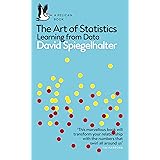Poisson Probabilities on TI-84 Calculator
Poisson Probabilities on TI-84 Calculator, Understanding Poisson probabilities can be crucial for many fields such as statistics, mathematics, and various sciences.
If you’re working with events that occur independently within a fixed interval of time or space, the Poisson distribution is a powerful tool.
Poisson Probabilities on TI-84 Calculator
In this guide, we will walk you through the process of calculating Poisson probabilities using the TI-84 calculator.
What Is the Poisson Distribution?
The Poisson distribution is a discrete probability distribution that expresses the probability of a given number of events occurring in a fixed interval, given a known average rate of occurrence.
It’s particularly useful in scenarios where events happen at a constant rate and independently of the time since the last event.
Key Parameters:
- λ (lambda): The average number of occurrences in the given interval.
- k: The actual number of occurrences.
Poisson Probability Formula
The formula for calculating the Poisson probability (P(X = k)) is as follows:
poissonpdf(mean, x) returns the probability associated with the Poisson pdf.
poissoncdf(mean, x) returns the cumulative probability associated with the Poisson cdf.
where:
- mean = mean number of “successes”
- x = specific number of “successes”
Using the TI-84 Calculator for Poisson Probabilities
The TI-84 calculator simplifies the process of calculating Poisson probabilities with built-in functions. Here’s a step-by-step guide:
Step 1: Access the Distribution Menu
- Turn on your TI-84 calculator.
- Press the
2ndbutton. - Then press the
VARSbutton to access the distribution menu.
Step 2: Choose the Poisson Probability Function
- Scroll down to
poissonpdf(for calculating the probability of exactly k events orpoissoncdf(for calculating the cumulative probability (up to k events). - Select
poissonpdf(if you want to find the probability for a specific k.
Step 3: Input the Parameters
When prompted, enter the parameters in the following format:poissonpdf(lambda, k)
- lambda: Enter the average rate of occurrences.
- k: Enter the specific number of occurrences you want to calculate the probability for.
Example Calculation
Let’s say the average number (λ) of emails received per hour at a help desk is 4, and you want to find the probability of receiving exactly 3 emails in an hour.
- Access the distribution menu by pressing
2ndfollowed byVARS. - Select
poissonpdf(. - Input the parameters:
poissonpdf(4, 3). - Press
ENTER.
Your TI-84 calculator will display the probability of receiving exactly 3 emails.

Cumulative Probability
If you want to find out the probability of receiving up to 3 emails, use the poissoncdf( function:
- Access the distribution menu again.
- This time, select
poissoncdf(. - Enter the parameters:
poissoncdf(4, 3). - Press
ENTER.
This gives you the cumulative probability of receiving 0 to 3 emails during the hour.
Conclusion
Calculating Poisson probabilities using the TI-84 calculator is straightforward and efficient.
By understanding how to access the correct functions and input your parameters, you can easily analyze your data.
Whether you are working in academia, industry, or simply exploring statistical concepts, mastering the Poisson distribution can provide valuable insights into your event-based data analysis.
For more statistical resources and guides, stay tuned to our blog.



